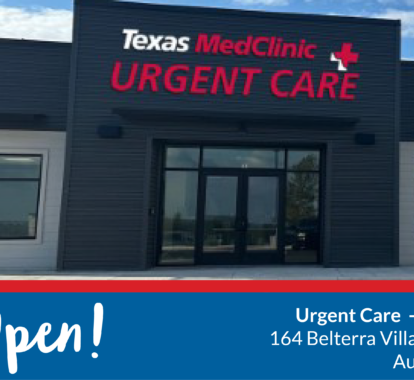Treating minor burns at home or when to seek medical attention
October 4, 2021

Whether it’s grabbing the handle of a hot cooking pan, spilling hot soup, tea or coffee, getting too close to a grill or outdoor camp fire, many of us have experienced the pain of burning our skin.
Burns occur when tissue is damaged due to scalding. Sunburns, overexposure to radiation, smoke inhalation, or direct contact with fire, chemicals, or electricity are also ways people get burned.
The American Burn Association estimates that 486,000 people in the U.S. receive treatment for burn injuries each year. In Texas, burns are the fourth leading cause of unintentional injury death for children ages 1 – 9.
What are the differences in first, second and third-degree burns?
First-degree burns are limited to the top layer of skin. These minor burns usually do not require emergency medical care and can be treated at home.
Typical symptoms of minor burns include:
- A burn limited to an area no larger than 3 inches in diameter
- Redness similar to a sunburn
- Pain or discomfort
- Blisters on the skin
Second-degree burns involve the first two layers of skin, while third-degree burns penetrate the entire thickness of the tissue and cause permanent damage.
Symptoms of second- and third-degree burns may include:
- Damage that appears to penetrate deep within the skin
- Glossy appearance due to leaking fluids
- Loss of skin
- Cause the skin to appear dry and/or leathery
- Skin that appears charred or has patches of white, brown, or black
“Serious burns can be life threatening and often require immediate medical attention,” said Texas MedClinic Chief Operating Officer and practicing physician Dr. David Gude. “Treating serious burns within the first few minutes after they occur can help decrease the severity of the injury.”
How do you treat minor, first-degree burns at home?
When treating first-degree burns at home, follow these 6 steps:
- Cool the burn as quickly as possible by holding the burned area under cool (not cold) running water. Alternatively, you may gently hold a cool, wet compress against the affected area until the discomfort subsides.
- Remove jewelry, belts, and any other tight items from the burned area before swelling takes place.
- Avoid puncturing or tearing blisters. These fluid-filled pockets serve as barriers against infection. If a blister ruptures, clean the area with mild soap and cool water and apply a thin layer of antibiotic ointment or petroleum jelly
- Cover the burn with a sterile gauze bandage. Take care to avoid putting pressure on damaged skin by wrapping the gauze loosely. Keeping the area covered will help reduce pain and decrease the chance of tearing blisters.
- You may take an over-the-counter pain reliever like ibuprofen (Advil or Motrin), naproxen (Aleve), or acetaminophen (Tylenol). Follow dosing instructions on medication packaging.
If a first-degree burn does cover a large area or the victim is an infant or is elderly, seek medical attention.
How do you provide relief and care for second and third-degree burns?
It is important to seek immediate medical attention with second- and third-degree burns.
Before heading to a medical facility, taking the steps below can decrease the severity of the burn injury.
For second-degree burns:
- Apply a cool compress.
- Gently dry the area and cover with sterile gauze.
- Keep blisters intact and avoid applying ointments or creams.
- Elevate burned extremities.
- Prevent shock by laying the victim down, elevating feet 12 inches, and covering with a coat or blanket.
For third-degree burns:
- Gently cover burns with sterile gauze or a clean cloth.
- Avoid applying ointments or creams.
- Prevent shock by laying the victim down, elevating feet 12 inches, and covering with a coat or blanket.
- Do not place a pillow under the head of the victim if they experienced an airway burn as this can close off their airway.




